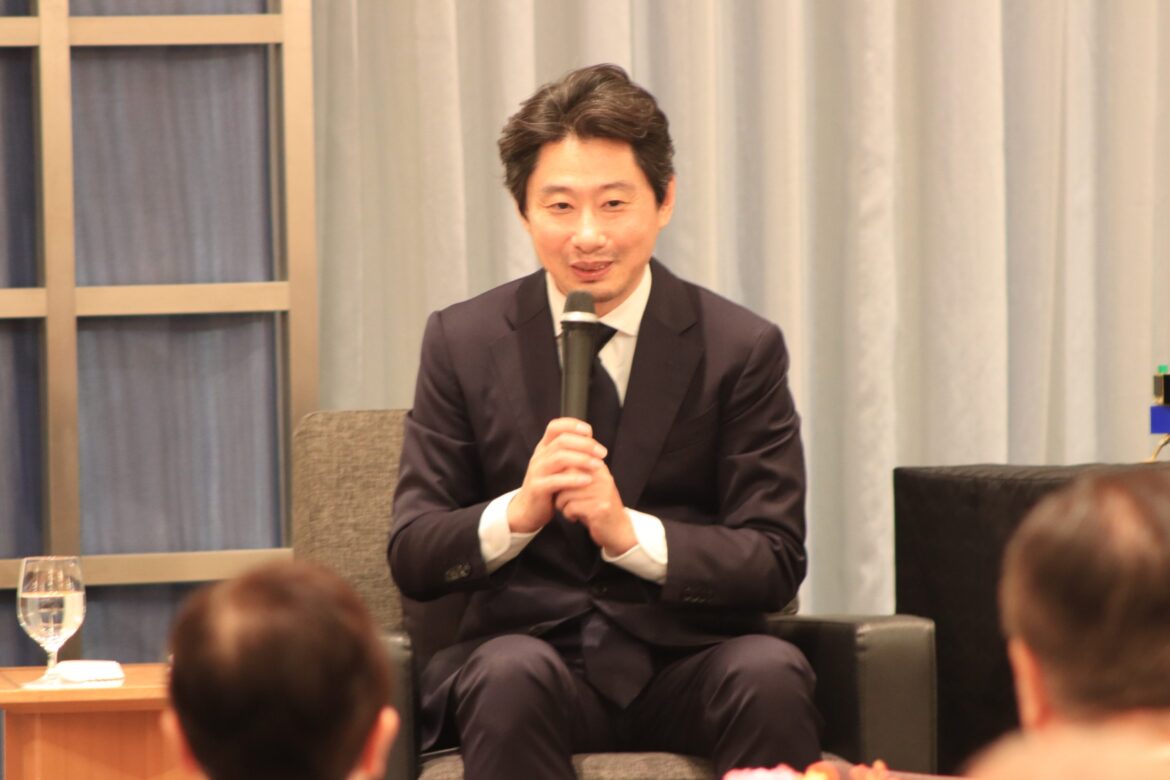Before Takeshi Hakamada arrived at Georgia Tech in the mid-2000s, he’d almost been afraid to go abroad.
Good thing he brushed up on his English and took the plunge: the aerospace engineering alum is now running a Tokyo-based space startup that just raised $112 million as it inches closer to touching down on the moon.
While ispace Inc.’s team of 350, including 100 Americans in Denver, has yet to successfully land on the moon’s craggy, sandy surface, Mr. Hakamada, the CEO as well as the founder, said two failed missions have brought it ever closer, making ispace the only private lunar program outside the United States that can even approach the feat.
During a luncheon presentation at the Southeast U.S.-Japan alliance conference, which focused on space collaboration and academic exchange as elements of future bilateral partnership, he showed photos that the team’s first lander, Resilience, took as it approached the moon’s surface. A hardware failure in an altitude detection device kept it from descending, but the team is plowing ahead undeterred.
After all, he said, in what may be the understatement of the century: “Space is hard.”
“Space is hard.”
Takeshi hakamada
A third mission is planned for 2027 with the goal of landing its larger Apex rover near the moon’s south pole, suspected to harbor water.
In Atlanta 20 years ago, Mr. Hakamada was so head-down studying for his master’s, he doesn’t recall much of the city, he told Global Atlanta. But the space buff does remember why Tech stood out as he perused graduate schools’ websites in the U.S. and Japan. Many specialized in particular facets of aerospace, like structures, propulsion and navigation.
“But I was not super interested each of the areas. My interest was how to create stuff, how to design the entire system, because I liked Star Wars,” he said.
Georgia Tech, he saw, had a focus on “systems engineering,” understanding the interlocking pieces of a product and then evaluating its market potential.
“My way of thinking was always multidisciplinary, not only just technology, but also how to integrate economic elements into the design,” Mr. Hakamada said. While he failed to land Google’s $20 million X prize, shooting for the moon led to the founding of ispace.
En route to his future model, which will include delivering payloads and rovers to future moon bases at a cost of $1.5 million per kilogram, ispace is selling sponsorships and developing plans to rent its data, with space programs like NASA and JAXA emerging as both collaborators and customers.
In the meantime, the U.S. and Japan should encourage their alliance to continue its ascent, given the “first-come, first-served” rush for colonizing the moon. The celestial body is seen as a future supply base for Mars missions and even a venue for producing nuclear power or semiconductors.
“This race is not just the U.S. and China. It’s a competition including many, many countries,” Mr. Hakamada said.
He was short on predictions, but Mr. Hakamada sticks to his belief that by the 2040s, aided by companies like his, about a thousand earthlings will be living and working on the moon.
Along with AI and quantum computing, space exploration was among the fields U.S. President Donald Trump and new Japanese Prime Minister Sanae Takaichi highlighted as part of their future-facing tech partnership as Mr. Trump visited Tokyo — a day before Mr. Hakamada was speaking to top corporate, political and economic development leaders from across the Southeast U.S.
Christine Karbowiak, a retired executive vice president and global sustainability director from Bridgestone Americas who served as the emcee for the day, called out the Georgia delegation:
“Congratulations — you managed to land a real star,” said Ms. Karbowiak.
One who is making his way to landing on the moon.
From the archive:


AloJapan.com